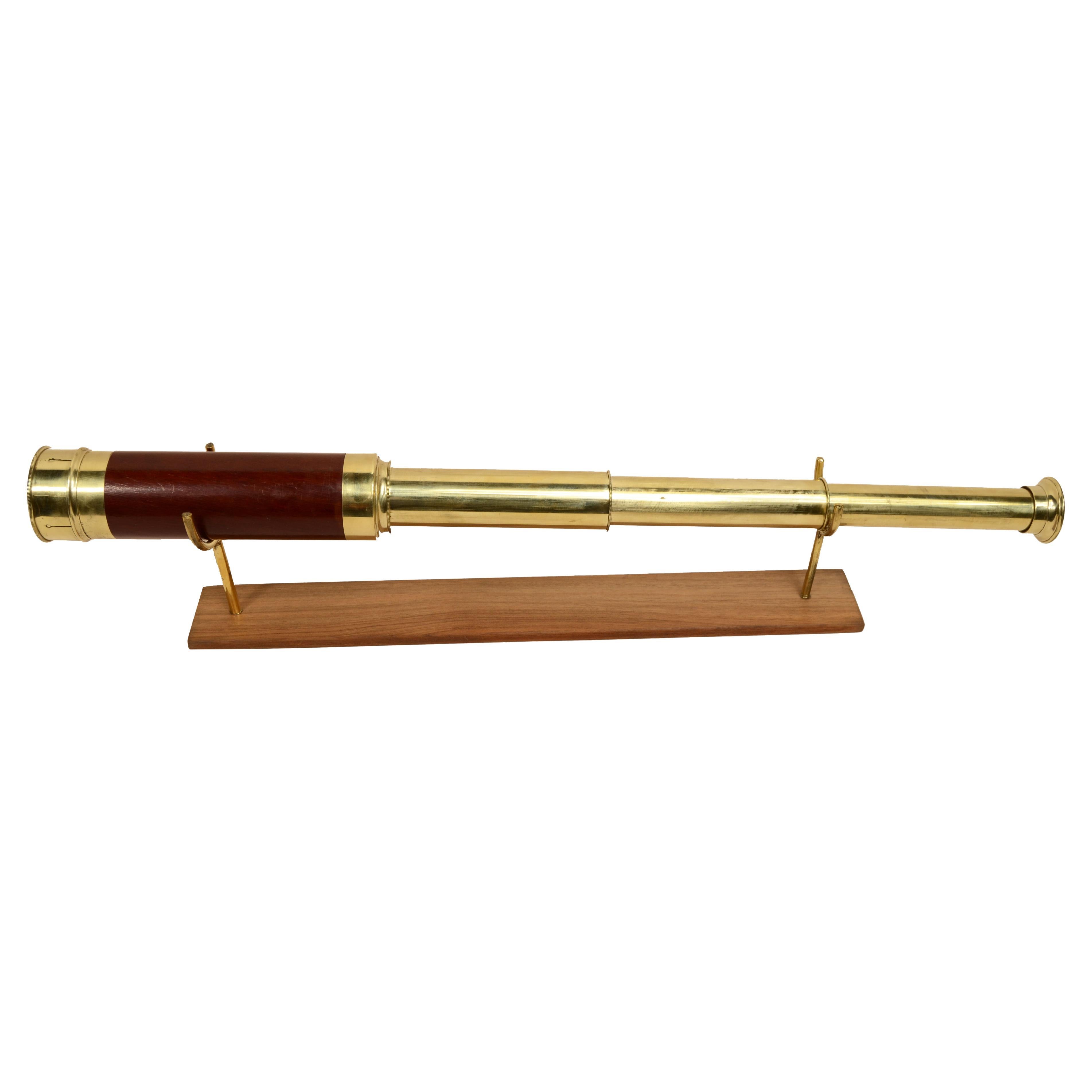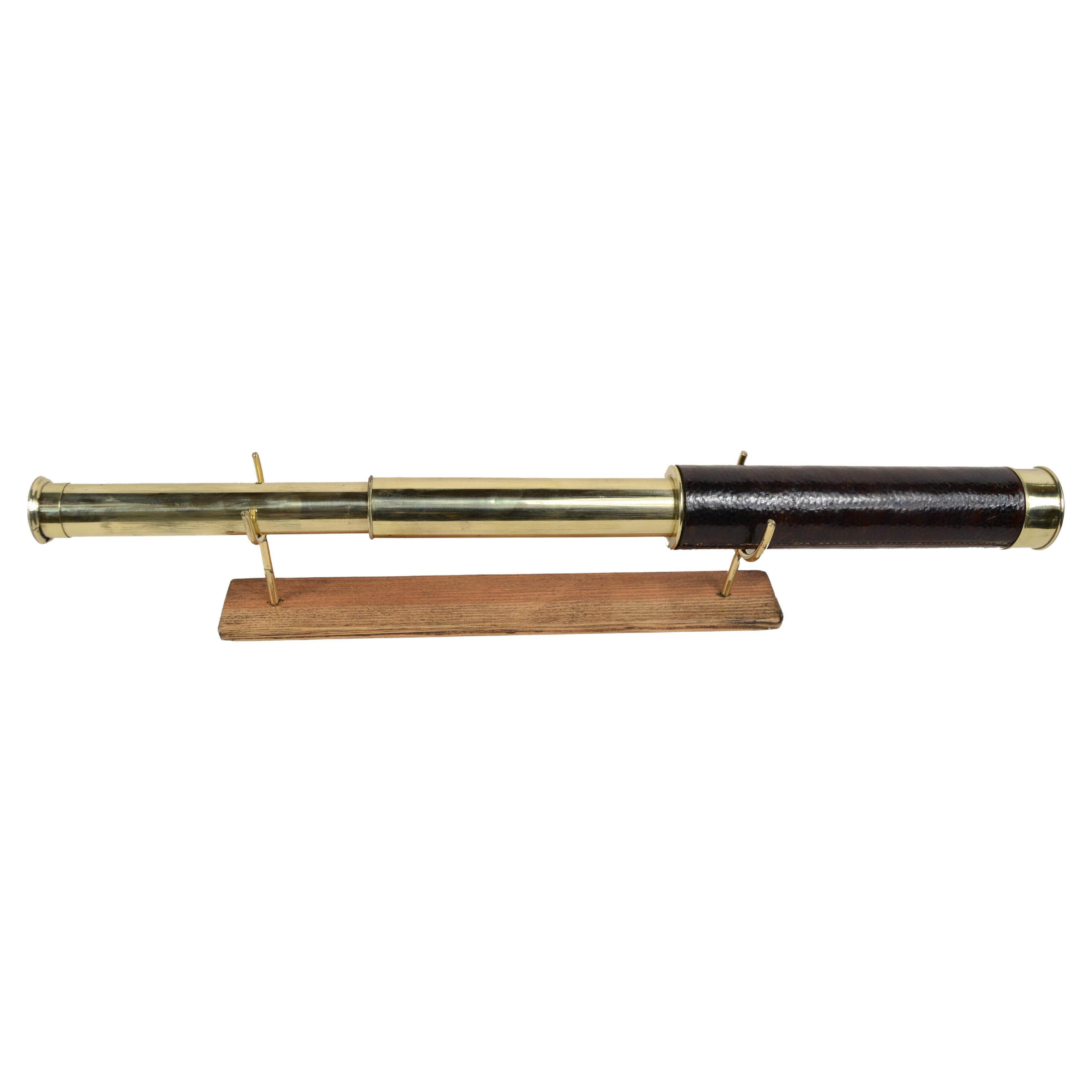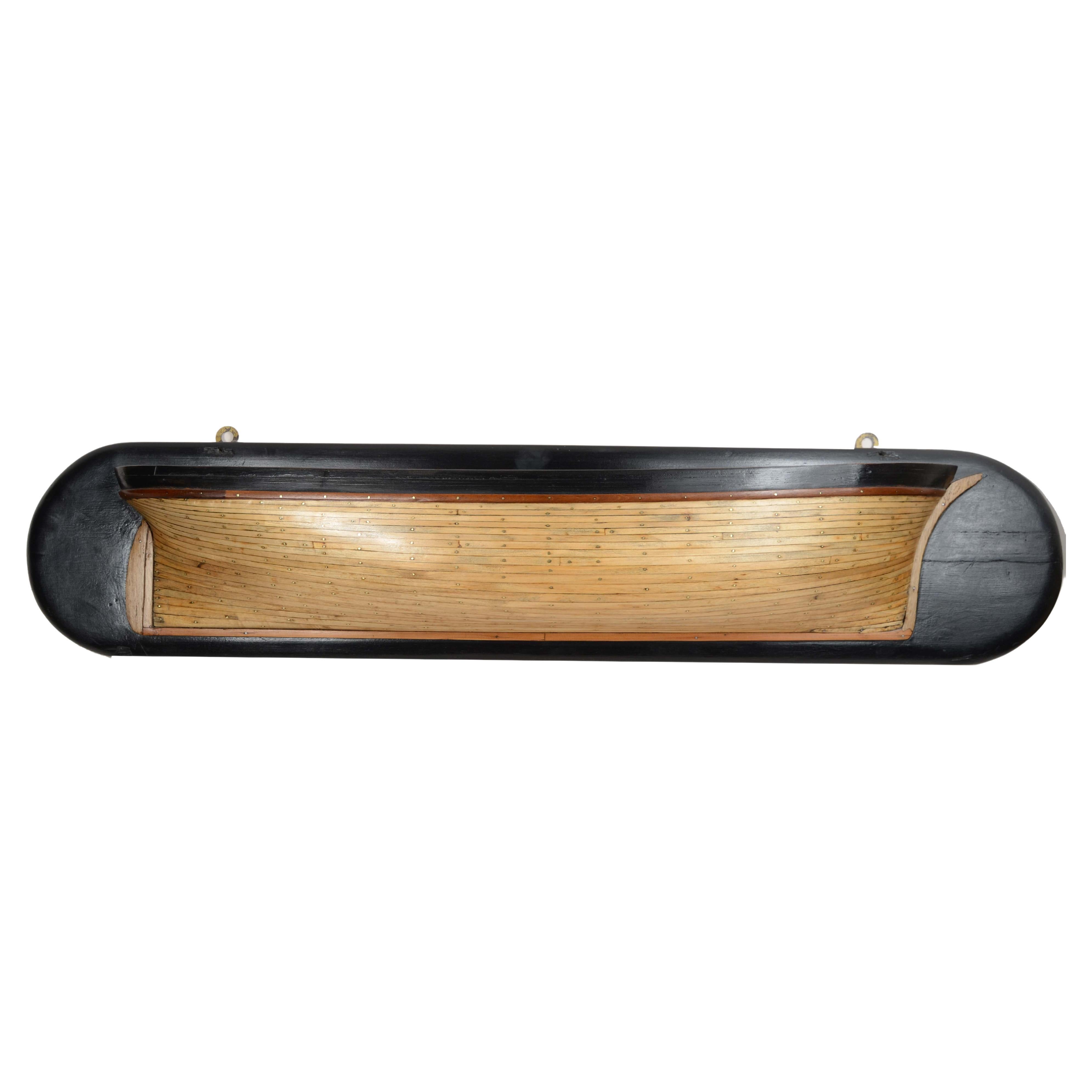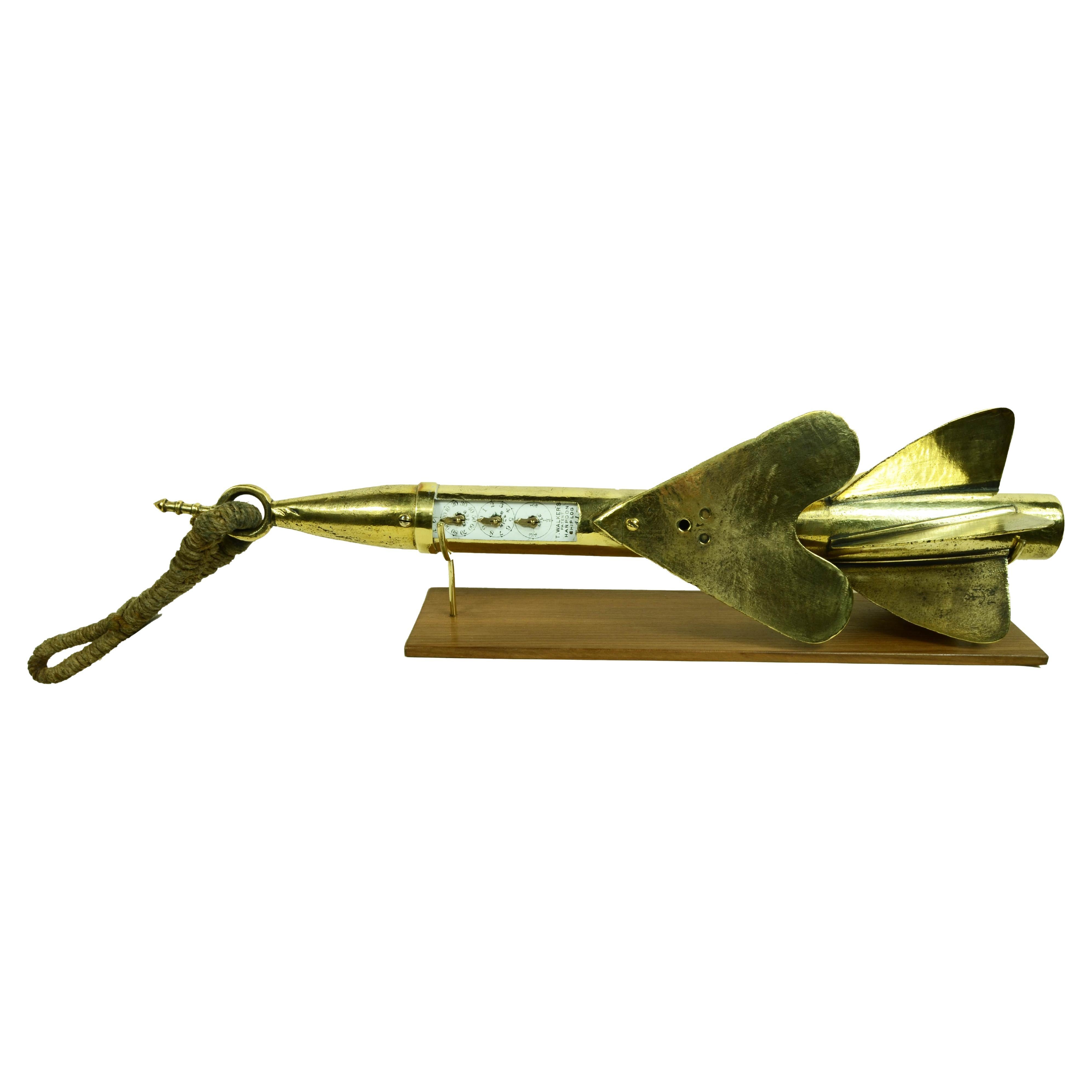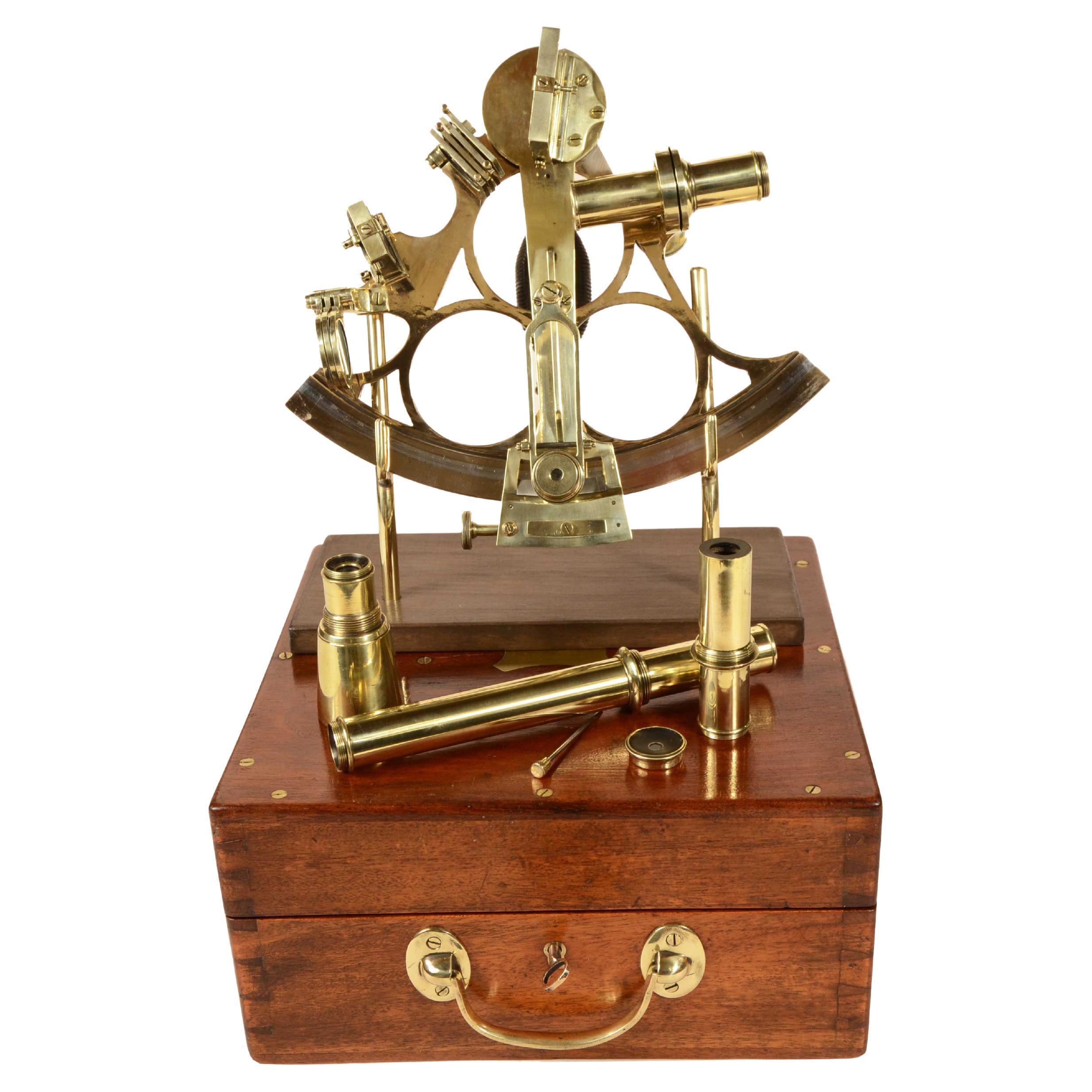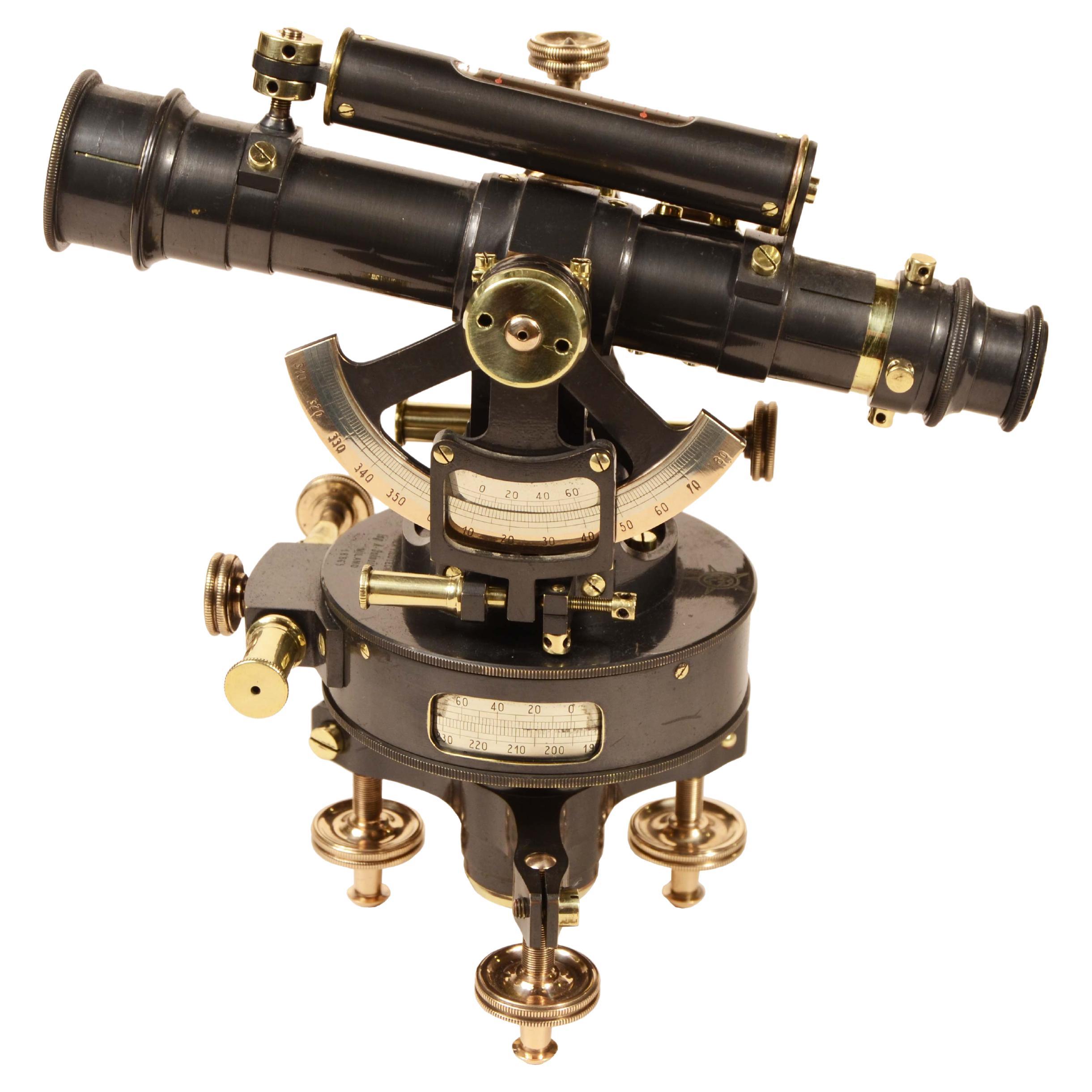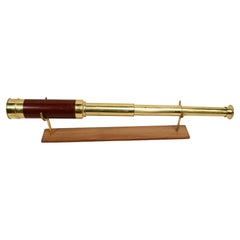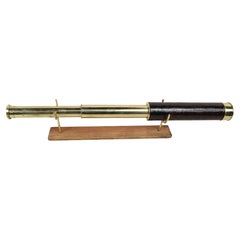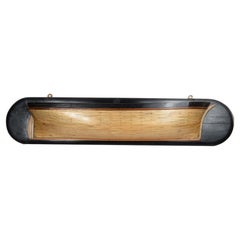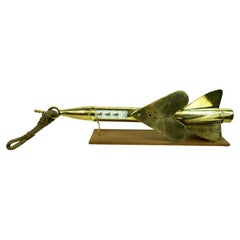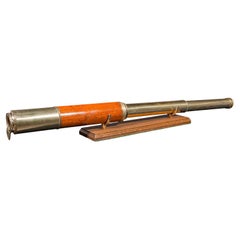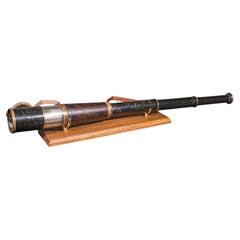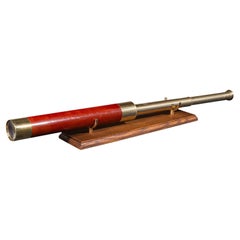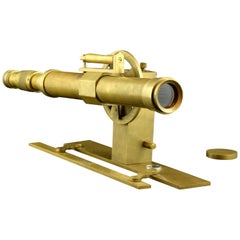Items Similar to Cannocchiale in ottone con impugnatura in Galuchat seconda metà XIX secolo
Want more images or videos?
Request additional images or videos from the seller
1 of 16
Cannocchiale in ottone con impugnatura in Galuchat seconda metà XIX secolo
$1,073.06
£794.97
€900
CA$1,470.03
A$1,631.13
CHF 854.42
MX$20,001.99
NOK 10,867.92
SEK 10,258.85
DKK 6,846.10
Shipping
Retrieving quote...The 1stDibs Promise:
Authenticity Guarantee,
Money-Back Guarantee,
24-Hour Cancellation
About the Item
Cannocchiale in ottone a sezione tonda con impugnatura rivestita di Galuchat pelle di razza conciata e messa fuoco a tre allunghi. Manifattura inglese della seconda metà dell'800. Lunghezza massima cm 40,3, inches 15.9, minima cm 15,- inches 5.9 diametro focale cm 3 – inches 1.2.
Buono stato, perfettamente funzionante e completo di base d’appoggio in legno e ottone realizzata su misura.
Per mettere a fuoco il cannocchiale bisogna allungarlo tutto e poi lentamente accorciare l’ultimo allungo, quello più piccolo, finchè l’immagine non è a fuoco.
Il galuchat è la pelle conciata di squalo o di razza e per il suo alto costo è da sempre stata utilizzata per rivestire oggetti di prestigio. Prende il nome dal suo primo utilizzatore a servizio di Luigi XV, Jean Claude Galuchat morto nel 1774.
Secondo la leggenda, un giorno imprecisato del 1608 i figli di Hans Lipperhey, che era un occhialaio di Middelburg , stavano giocando nel laboratorio del padre con delle lenti. Quando uno dei figli mise una lente concava vicino al proprio occhio, tenendo nell’altra mano una lente convessa, e tendendo il braccio in direzione della punta del campanile della cattedrale vi guardò attraverso, vide ingrandirsi e avvicinarsi il gallo segnavento che si trovava sulla cima. Mostrato subito il fenomeno al padre, egli fissò le lenti su un’assicella per rendere più agevole l’osservazione, creando così il primo rudimentale cannocchiale. Purtroppo per Lipperhey però, quando presentò agli stati generali una richiesta di brevetto per questo strumento, in pochi giorni anche altri occhialai olandesi rivendicarono l’invenzione.
L'ultima foto è la confezione regalo.
About the Seller
5.0
Vetted Professional Seller
Every seller passes strict standards for authenticity and reliability
Established in 1999
1stDibs seller since 2014
397 sales on 1stDibs
Typical response time: 1 hour
- ShippingRetrieving quote...Shipping from: Milan, Italy
- Return Policy
Authenticity Guarantee
In the unlikely event there’s an issue with an item’s authenticity, contact us within 1 year for a full refund. DetailsMoney-Back Guarantee
If your item is not as described, is damaged in transit, or does not arrive, contact us within 7 days for a full refund. Details24-Hour Cancellation
You have a 24-hour grace period in which to reconsider your purchase, with no questions asked.Vetted Professional Sellers
Our world-class sellers must adhere to strict standards for service and quality, maintaining the integrity of our listings.Price-Match Guarantee
If you find that a seller listed the same item for a lower price elsewhere, we’ll match it.Trusted Global Delivery
Our best-in-class carrier network provides specialized shipping options worldwide, including custom delivery.More From This Seller
View AllRound section brass telescope with mahogany wood handle 1850s
Located in Milan, IT
Round-section brass telescope with mahogany wood handle, three-extension focus, complete with dust cap. English manufacture of the mid-19th century. Maximum length cm 43, inches 16.9...
Category
Antique Mid-19th Century Nautical Objects
Materials
Brass
Cannocchiale ottone e cuoio con messa fuoco a due allunghi Inghilterra 1870 circ
Located in Milan, IT
Cannocchiale in ottone con impugnatura rivestita di cuoio e messa fuoco a due allunghi, completo di tappo e di linguetta parapolvere. Manifattura inglese della seconda metà dell'800....
Category
Antique 1870s Nautical Objects
Materials
Brass
Second half of the 19th century half-hull of an English schooner wooden
Located in Milan, IT
Second half of the 19th century half-hull of an English schooner wooden planking nailed and mounted on ebonized wooden board.
Good condition, board measures 100x 13x21 cm - inches...
Category
Antique 1870s Nautical Objects
Materials
Wood
Brass nautical log or solcometer in the shape of a speargun, signed T. Walker's 1870
Located in Milan, IT
Log o solcometro contamiglia nautico in ottone a forma di harpoon, signed T. Walker's Patent Harpoon Ship Log A 1 London , from the second half of the 1800s. It is an ancient nautical instrument, very rare and with a characteristic shape, which measured the distance and speed of a ship. Veniva gettato fuori bordo e trascinato dietro la nave stessa; ruotando grazie alla sua elica, trasmetteva il numero di giri fatti su se stesso ai tre quadranti realizzati su una placca in metallo smaltato posta al centro del log; i quadranti riportavano le misurazioni in miglia da 0 a 100 in decine, da 0 a 10 in unità, da 0 a 1 in quarti. I dati venivano poi letti ogni ora per ricavare anche la velocità.
Good condition replaced flap perfectly working and mounted on custom-made brass wood base.
Measurements length cm 54 - 21.2 in, propeller diameter cm 13 - 5.1 in.
The last photo is the gift box.
In past centuries, the attempt to measure the speed of ships was severely hampered mainly by the 'unavailability of time-measuring instruments of sufficient accuracy: by throwing a piece of wood overboard from the bow of a ship and measuring the time it took to reach the stern, it was possible to obtain some information about the speed of the ship itself, but with many errors and inaccuracies.
The principle of the mechanical solcometer was explained to the Royal Society in 1699 by Robert Hooke, but the first model produced for commercial use was not patented until 1802 by Edward Massey...
Category
Antique 1870s Nautical Objects
Materials
Brass
Brass sextant signed B. Cooke & Son Hull from the second half of the 19th century
Located in Milan, IT
Brass sextant signed B. Cooke & Son Hull, from the second half of the 19th century and housed in its original mahogany wood box with brass handle, hinges, and locking hooks, complete...
Category
Antique 1870s Nautical Objects
Materials
Brass
Tacheometro model Soldati late 19th c. signed La Filotecnica Milano
Located in Milan, IT
Tacheometer model Soldati from the late 19th century signed La Filotecnica Ing. A Salmoiraghi Milan serial no. 18865.
Construction site surveying and tracking tool used for calculati...
Category
Antique Late 19th Century Scientific Instruments
Materials
Brass
You May Also Like
Antique 2 Draw Telescope, English, Maritime, Day or Night, Richardson, Regency
Located in Hele, Devon, GB
This is a large antique 2-draw telescope. An English, terrestrial or maritime ‘Day or Night’ instrument by Richardson of London, dating to the Regency period, circa 1820.
Perfect fo...
Category
Antique 1820s British Regency Scientific Instruments
Materials
Brass
Large Antique 3-Draw Telescope, Irish, Brass, Leather, Terrestrial, Edwardian
Located in Hele, Devon, GB
This is a large antique 3-draw telescope. An Irish, terrestrial or astronomical instrument in enamelled brass and leather, dating to the Edwardian period, circa 1910.
Perfect for bi...
Category
Early 20th Century Northern Irish Edwardian Scientific Instruments
Materials
Brass
Antique 2 Draw Telescope, English, Brass, Navigational Instrument, Victorian
Located in Hele, Devon, GB
This is an antique 2-draw telescope, an English terrestrial or maritime navigational instrument, dating to the late Victorian period, circa 1900.
Perfect for bird watching, landscap...
Category
Early 20th Century British Late Victorian Scientific Instruments
Materials
Brass
Decorative Alidade, Metal, 20th Century
Located in Madrid, ES
It has a cover to protect the lens made of the same gold metal in which the rest of the instrument is made. The lines, pure and clean, are the protagonists, and make it a great opti...
Category
20th Century Unknown Other Scientific Instruments
Materials
Metal, Other
Antique 3 Draw Telescope, English Brass, Terrestrial Instrument, Victorian, 1880
Located in Hele, Devon, GB
Perfect for bird watching, landscape appreciation, wildlife, or maritime observation. Equally suitable for observing the night sky.
This is an antique 3-draw telescope. An English, ...
Category
Antique 1880s British Late Victorian Scientific Instruments
Materials
Brass
Solid Brass Ship Captains Telescope
Located in Norwell, MA
Ships spyglass telescope appropriate for use on a yacht, ship, or anywhere with a view. This has been meticulously polished and lacquered. We just restored a great collection of thes...
Category
Vintage 1930s European Nautical Objects
Materials
Brass
More Ways To Browse
Antique Piccolo
Galuchat Furniture
Luigi Xv
Ultima 15
Vintage Wooden Arrows
Antique Spyglass
Brass Spyglass
Antique Ships Binnacle
Nautical Antiques Ships Wheel
Paddle Wheeler
Yacht Burgee
Oars Used
Sovereign Of The Seas
Wood Pulley Block
Wooden Pulley
Brass Ships Telegraph
Nautical Compass Antique Wood
Navy Compass
